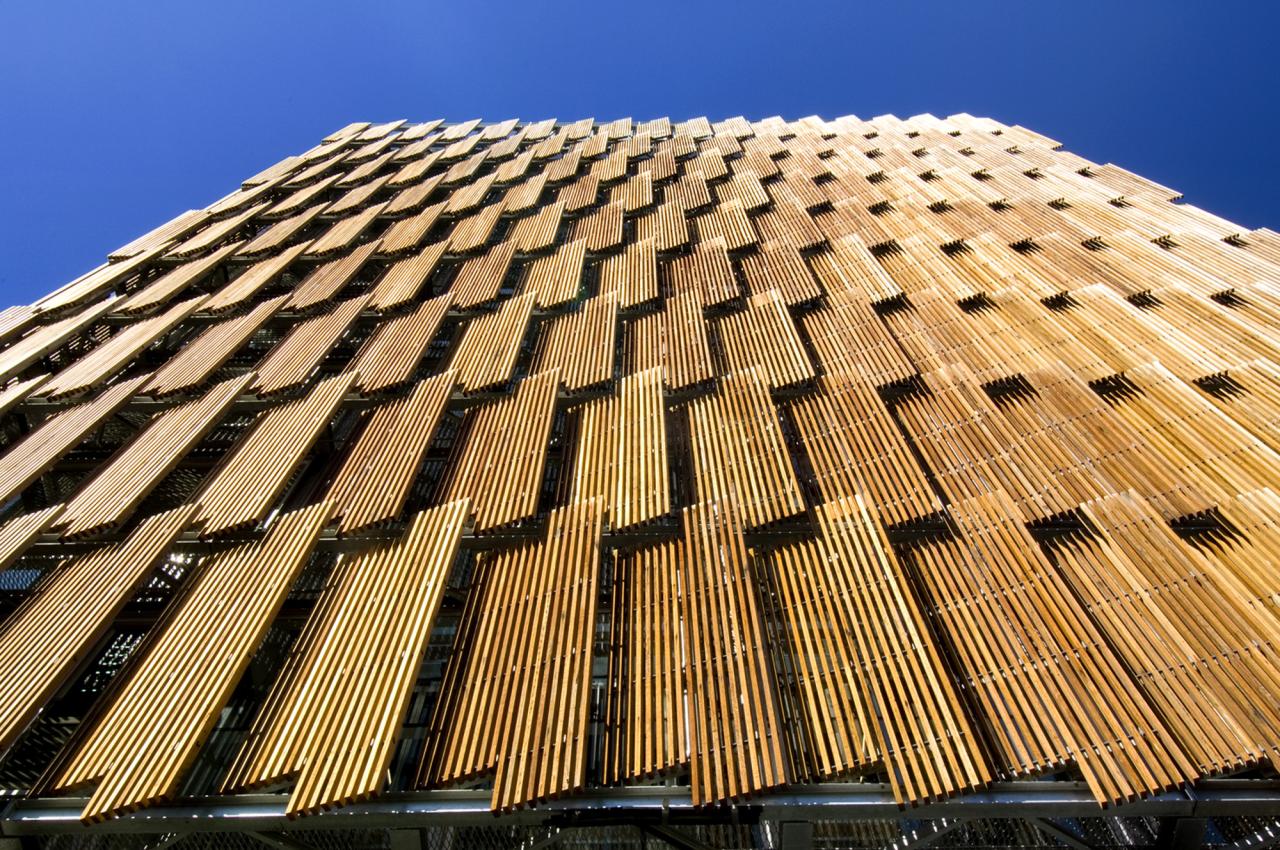In a world increasingly concerned with climate change, resource depletion, and waste management, the way we design, manufacture, and consume products is undergoing a profound transformation. The linear “take, make, dispose” economy, which has dominated for centuries, is proving to be unsustainable. The foundation of this shift to a more circular and regenerative model lies in a quiet but powerful revolution: the development and adoption of new sustainable materials. These aren’t just minor improvements on old formulas; they are groundbreaking innovations that are fundamentally changing the building blocks of our modern world. From bioplastics grown from algae to insulation made from mushrooms, these materials are not only eco-friendly but also offer superior performance, durability, and versatility. This comprehensive article will explore the critical need for new sustainable materials, detail the key principles driving their innovation, showcase the most exciting advancements across various industries, and examine the challenges and the promising future of this material revolution.
The Imperative for Sustainable Materials

The current material economy is deeply flawed, and its negative consequences are becoming more apparent every day. The problems are extensive and interconnected, creating a compelling case for a new approach.
A. Resource Depletion: The extraction of raw materials like fossil fuels, metals, and minerals is a finite process. We are rapidly depleting the Earth’s natural resources, and this over-consumption is not only unsustainable but also a major driver of geopolitical conflict and environmental degradation. The search for new materials that are derived from renewable sources is crucial for ensuring the long-term availability of resources.
B. Environmental Pollution and Waste: The production and disposal of many conventional materials, most notably plastics, have created a global environmental crisis. Our oceans are filling with plastic waste, and landfills are overflowing. The incineration of waste releases harmful toxins and greenhouse gases into the atmosphere. New materials that are biodegradable, compostable, or infinitely recyclable are essential to break this cycle of pollution.
C. High Embodied Energy and Carbon Footprint: The production of traditional materials like concrete, steel, and conventional plastics is incredibly energy-intensive. This “embodied energy” contributes significantly to a product’s overall carbon footprint before it is even used. Sustainable materials, in contrast, often require less energy to produce and can even be carbon-negative, meaning they absorb more CO2 during their growth than is released during their production.
D. Toxic Byproducts: The manufacturing processes for many materials rely on toxic chemicals and create hazardous waste. These substances can harm both the environment and human health, from factory workers to end-users. New sustainable materials are being developed with a focus on non-toxic, safe, and clean production methods, creating a healthier future for all.
The Pillars of Sustainable Material Innovation
To be truly sustainable, a new material must meet a specific set of criteria that go beyond just being “green.” It’s a holistic evaluation that considers a material’s entire life cycle.
A. Sourcing from Renewable or Recycled Feedstock: A material’s journey to sustainability begins at its source. The ideal sustainable material is made from renewable resources, such as plants (biomass), or from recycled or upcycled waste, such as old plastic bottles or discarded textiles. This approach minimizes the need for virgin resources and closes the loop on a product’s life cycle.
B. Minimizing Energy and Water in Production: The manufacturing process itself must be optimized for sustainability. This means using production methods that are energy-efficient, reduce water consumption, and generate minimal waste. The embodied energy of a material is a key metric, and innovations are focused on finding low-energy ways to create high-performance products.
C. Longevity and Durability: A truly sustainable product is one that lasts. Materials that are durable, long-lasting, and easily repairable reduce the need for constant replacement, which in turn reduces resource consumption and waste. The focus is on creating products that are not only eco-friendly but also built to endure the test of time.
D. End-of-Life Management: The “end-of-life” of a product is a critical component of its sustainability profile. A material should be designed to be either easily recyclable back into a new product, or, if not recyclable, safely biodegradable or compostable, returning its components to the Earth without harming ecosystems. This is a fundamental shift from the “disposal” mindset.
E. Non-Toxic and Safe for Ecosystems: The material itself and its production process must be free from toxic chemicals. This ensures that the material is safe for the people who manufacture it, the people who use it, and the environment at large. When a product biodegrades, it must do so without leaving behind harmful micro-pollutants.
Key Categories of Revolutionary Materials
The sustainable materials revolution is a vibrant field of innovation, spanning multiple scientific disciplines. Here are some of the most promising and game-changing material categories.
A. Biomaterials: These are materials derived from living organisms, often plants, fungi, or algae. They are a powerful alternative to fossil fuel-based products.
- Mycelium-Based Materials: Mycelium, the root structure of mushrooms, can be grown into a wide variety of shapes and densities. It is a fantastic, biodegradable alternative to Styrofoam for packaging and can also be used as a high-performance building insulation and even as a leather substitute.
- Algae-Based Products: Algae grows rapidly and requires minimal resources. It is being developed into foams for shoes, bioplastics for packaging, and even inks and dyes. This material is particularly exciting because it can sequester carbon from the atmosphere during its growth.
- Hempcrete and Bio-Composites: Hempcrete is a biocomposite material made from hemp hurds and a lime binder. It is lightweight, carbon-negative, and has excellent insulating properties, making it an ideal sustainable building material. Other bio-composites are being developed using a variety of natural fibers to create strong, lightweight materials for a range of applications, from furniture to automotive parts.
B. Recycled and Upcycled Materials: This category focuses on giving new life to waste, reducing the need for virgin materials and mitigating pollution.
- Ocean Plastic Textiles: Companies are collecting plastic waste from oceans and coastlines and turning it into high-performance fabrics for clothing, footwear, and accessories. This not only cleans up the environment but also provides a sustainable source of raw materials for the fashion industry.
- Construction and Demolition Waste: Instead of sending construction debris to landfills, innovators are crushing and processing materials like concrete, brick, and glass to create new, recycled aggregates for roadbeds and new concrete mixes.
- Upcycled Textiles: The fashion industry generates an enormous amount of textile waste. New innovations are focused on mechanically and chemically recycling old fabrics into new fibers, creating a closed-loop system for clothing production.
C. Advanced Composites and Nanomaterials: These materials push the boundaries of science to create high-performance products with a low environmental impact.
- Self-Healing Concrete: Concrete production is a major source of carbon emissions. Scientists are developing concrete that contains micro-capsules filled with healing agents or bacteria. When a crack forms, the capsules break and release the agents, which then seal the crack. This dramatically increases the longevity of the concrete, reducing the need for new production.
- Nanocellulose: This material is derived from wood pulp and is incredibly strong, lightweight, and transparent. It is being explored as a sustainable alternative for plastic films, electronics, and even as a composite in construction materials.
D. Materials Inspired by Nature (Biomimicry): This is a field of innovation where designers and engineers look to the natural world for inspiration.
- Spider Silk Alternatives: Spider silk is one of the strongest, most elastic materials known to man. Scientists are using genetic engineering to create microorganisms that produce proteins similar to spider silk, which can be spun into high-performance, biodegradable fibers for everything from medical sutures to high-strength ropes.
- Lotus Leaf Effect: The leaves of the lotus plant are naturally hydrophobic and self-cleaning. By mimicking the micro- and nano-structures on the surface of the leaf, scientists have developed self-cleaning, water-repellent coatings for everything from building exteriors to clothing.
Applications Across Industries

The sustainable materials revolution is not confined to a single sector; its impact is being felt across the entire global economy.
A. Construction: The building industry is one of the biggest consumers of resources and a major source of emissions. Sustainable materials are transforming construction with the use of biomaterials like hempcrete and mycelium, recycled content in concrete and insulation, and advanced materials that reduce the need for constant maintenance and replacement.
B. Fashion and Textiles: The fashion industry is notoriously wasteful and resource-intensive. New sustainable materials are offering a much-needed alternative to conventional fabrics. This includes Tencel, a fabric made from wood pulp in a closed-loop system; Piñatex, a leather alternative made from pineapple leaves; and recycled polyesters that are indistinguishable from new ones.
C. Packaging: The packaging industry is at the forefront of the plastic waste crisis. New sustainable materials are providing viable alternatives, such as compostable bioplastics made from cornstarch or sugar cane, mushroom-based packaging that is fully biodegradable, and paper-based materials with innovative coatings that are water-resistant and recyclable.
D. Automotive: The automotive industry is using sustainable materials to make cars lighter and more fuel-efficient. This includes bio-composites derived from agricultural waste for interior parts, recycled plastics for car components, and lighter, stronger materials that improve performance and reduce the vehicle’s carbon footprint.
The Circular Economy and the Role of Materials
The development of new sustainable materials is a cornerstone of the Circular Economy, an economic model that aims to eliminate waste and keep resources in use for as long as possible. A circular economy is a closed-loop system where products are designed for durability and their components are either recycled or biodegraded at the end of their useful life. The new materials being developed today are designed from the ground up to fit within this model, with a focus on:
A. Design for Disassembly: Products are designed to be easily taken apart at the end of their life, allowing their components to be separated and recycled.
B. Resource Recovery: Materials are chosen for their ability to be recycled without a loss of quality, creating a closed-loop system where a material can be used over and over again.
C. Biodegradability: For products where recycling is not feasible, a material’s ability to safely return to the Earth is a key design criterion.
Challenges and the Road Ahead
Despite the immense promise, the sustainable materials revolution is not without its challenges.
A. Scaling Production: Many of these new materials are currently produced in small quantities, making them more expensive than their traditional counterparts. Scaling up production to a level that can compete with conventional materials is a major hurdle.
B. Cost Competitiveness: For a new material to be widely adopted, it must be cost-competitive with the materials it is meant to replace. While the long-term environmental and financial benefits are clear, the initial cost is often a barrier.
C. Regulatory Frameworks: Governments and regulatory bodies need to create new standards and frameworks to certify and regulate these new materials. Clear guidelines for biodegradability, composting, and recycling are essential to ensure that a material’s claims are scientifically backed and not just “greenwashing.”
D. Consumer Education: For a product made from a new material to be successful, consumers need to be educated on its benefits and how to properly dispose of it. This includes clear labeling and communication to ensure that products are recycled or composted correctly.
Conclusion
The revolution in sustainable materials is a critical and exciting field of innovation. It is a direct response to the urgent need to create a more resilient, regenerative, and environmentally conscious world. As the technology matures, the costs decrease, and the regulatory environment adapts, these new materials will cease to be niche alternatives and will become the standard building blocks for a sustainable future.









Discussion about this post